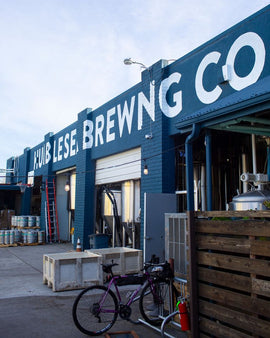VENETO
Last month I discovered, by accident and to my great surprise, that in seven years exploring the wine regions of Italy, this club has somehow never made it to Veneto. Which is weird; its capital, Venice, is after all one of the most famous places on the planet, endlessly mythologized, celebrated, depicted - via art, literature, photos, film - even simulated (the fake version in Vegas) and, above all, visited, by some twenty million tourists each year.
Hard to ignore on any grand tour, but there are good reasons to skip this stop, especially if you don’t like crowds. On the busiest of visiting days, 120,000 out-of-towners throng this city of just 55,000, most of them headed to the same handful of places, overwhelming the local infrastructure, occluding regular life, and making everyone irritable and eager to head elsewhere. Only half the annual influx even stays a night in the city - the rest are day-trippers and cruise-shippers - but that’s still enough to drive up the cost of living to the point where the gloomiest demographic forecasts envision no permanent residents by 2030. Meaning the actual city risks becoming the theme park to which its Nevada epigone aspires. (Welcome to the desert of the Rialto, amiright?) Seems like an outcome to avoid, even if it condemns you to seven years wandering Italy without encountering any gondoliers.
Fortunately, there’s a lot more to Veneto than its capital. Verona, for instance, where Romeo met Juliet, the ancient city of Padua, where Giotti’s epochal frescoes canopy the Cappella degli Scrovegni, and Lake Garda and the Dolomites Alps, if its stunning natural beauty you’re after. There’s also the local wine situation, which suffers reputationally from a little bit of the Venice complaint. Though 4th largest in population, and only 8th by size, Veneto produces more vino by volume per annum than any other place in Italy - some 8.8 million hectolitres each year, good for 18% of Italy’s and 3% of the entire world’s annual total. White wine constitutes 80% of the output - sparkling Prosecco and still Soave (made from the Garganega grape) mostly, and most of it decent but not terribly memorable.
One notable exception is the Fasoli Gino Pieve Vecchia IGT 2018, our white selection this month. Though 100% Gargenega, it is way too singular and complex a bottling to be subsumed by the Soave label. A combination of three different harvests, at three different stations in the life-cycle of the varietal, its specific labor intensive production process is a kind of white wine equivalent to that which produces Veneto’s famous red Valpolicella wines (see below for more details.) The first passage yields young grapes that provide freshness to the wine; the second takes place when the grapes are perfectly matured, and the third is left until the sugar and flavors are most concentrated in the grapes. The blend is then aged for 12-15 months in French oak, and another six months in the bottle before release, resulting in a full-bodied, rich (15.5% ABV!), aromatic and densely flavored wine that isn’t like much else I’ve ever had. This one benefits from decanting, and can age for 7-10 years as well.
The red comes from 240 square kilometers of indigenous grapes and bespoke production methods in the foothills of the Alps, that gather under the aforementioned letters ‘Valpolicella.’The word itself dates back to the 12th century, is thought to be a mix of ancient Latin and Greek and means “valley of many cellars,” which remains accurate given that the Valpolicella DOC ranks just behind Chianti in terms of red wine production in Italy. There are five different tiers/styles of Valpolicella: Classico, Classico Superiore, Ripasso, Amarone, and Recioto. All are blends of the same four local varietals - Corvina, Rondinella, Corvinone, and Molinara - which are grown throughout the region (and almost nowhere else); collectively they cover every station of your traditional repast, from aperitivo (Classico) to dolce (Recioto).
Amarone is the most famous and expensive of the tiers, and its production process is the starting point for every other level of Valpolicella juice. First, the grapes are selected cluster by cluster over a span of time. Multiple passes are made in the vineyard, during which substandard berries are plucked away one at a time. Healthy clusters are laid to rest on wicker shelves in special drying chambers for the next four or five months. During the drying time, or appassimento, each grape shrinks as its water mass evaporates, the sugars concentrate, and the ratio between skins, seed, and pulp is dramatically altered. Only after the drying process is completed are the grapes destemmed, pressed, and fermented into wine. The result is a full-bodied, bold, and age-worthy wine characterized by smoke and clove aromas, dried fruit notes, firm tannins and high alcohol (15-16%). The dried out grapes that don’t go into Amarone are used in the desert wine Recioto (where fermentation stops before all the sugars are converted into alcohol); the skins and seeds left over from Amarone and Recioto vinification is then added to regular Valpolicella Classico for an extended maceration that results in
Valpolicella Ripasso (“repassed” in Italian), which functions like a slightly softer Amarone. Classico Superiore, requires at least one year of aging, often in oak, and is fuller than regular Classico, sometimes with hints of the vanilla, smoke clove aromas of Amarone and Ripasso. Valpolicella Classico comes from the finest terroir in the DOC, just northwest of Verona, and consisting of three vertically-running valleys - Fumane, Marano and Negrar. It is light, fruit forward, and does well with a slight chill.
Our red this month is a Ripasso Classico Superiore from Thomas Bussola, whom the legendary Guiseppe Quintarelli (arguably the most iconic winemaker in the history of Veneto) once identified as the brightest young star in the region. It really over-delivers for the price point, with opulent fruit and spice, fine-grained tannins and a long finish.
Salud,
Alan Hicks
Wine Buyer PlumpJack
Wine & Spirits Noe Valley
|
Fasoli Gino Pieve Vecchia Bianco Veronese IGT 2018 |
|
|
Region: Verona |
About the Winery: The Fasoli family first ventured into agriculture in 1921 when Amadio Fasoli grew fruits, vegetables and grapes in the valley of Illasi, the green hills to the east of Verona. Amadio personally delivered the wines he made to the best eateries of the area, transporting the demijohns by horse and cart. The company was officially founded in 1925 when the first invoice of sale was issued to the parish priest. It was Amadio’s son Gino who gave his name to the winery, driven by a wider vision: to make his wines known across the entire region of Verona. He expanded the vineyard area and built a new winery, establishing the label in 1977. In 1979, his sons Natalino and Amadio inherited the Estate. They transformed it by converting to certified organic production in 1984, because pesticides and herbicides had harmed their father’s health. “We rejected those synthetic products as we must respect the farmers, the consumers, and nature,” Natalino has said. By 1990, the quality uplift was evident, so in 2006, they introduced Demeter-certified Biodynamic practices. While they own only 20 hectares of land, they access another hundred through growers working under their supervision. Traditional pergola vine training features nets to protect the vines from frequently destructive hailstorms. Cover crops are grown between the rows and serve as ‘green manure.’ Rare-breed chickens keep control of vineyard pests. The winery itself achieved zero-emission status in 2016, utilizing solar energy and other clean environmental practices. Fermentations are long and slow, with cultured yeasts used when necessary, only on the dried-grape wines: few strains can cope with the high level of grape sugar and resultant alcohol. They also reduce the risk of a stuck ferment that would create high levels of unwelcome volatile acidity (VA). It’s a low-sulphur regime (with two no sulphur wines), and vegan-friendly. About the Winemaking: Fermentation begins in steel, to pass into tonneaux where it rests for about 12/15 months on its lees. The refinement in the bottle for 6 months completes its maturation. Tasting Notes: The mouth is round, tonic, full of flavor. Golden colored wine, enveloping, full with notes of ripe white fruit well supported by good acidity. Closes with a note of almond and dry pastry. |
|
Winemaker: Natalino Fasoli |
|
|
Price per bottle / per case $29.99/$323.90 |
|
|
Suggested Food Pairing: toasted nuts, figs and blue cheese, seafood main courses, especially shellfish. Asparagus risotto (see recipe) and white meats. |
|
|
Tommaso Bussola Valpolicella Ripasso Classico Superiore Ca del Laito 2018 |
|
|
Region: Valpolicella Classico |
About the Winery: When Veneto legend Giuseppe Quintarelli was asked years ago to name the region’s next superstar, he didn’t hesitate: Tommaso Bussola Originally trained as a stone mason, Tommaso took over over his uncle's Valpolicella estate—with its prized old vineyards in the heart of the Classico zone—in the mid-1980's. While vineyard work came naturally to him, he experimented relentlessly, and absorbed information and ideas from every source available. With each passing vintage, his wines came to show more polish, finesse, intensity, and personality. By the late nineties, his style had matured, and his wines had become world-famous for their incredible intensity of fruit. Like other top Veneto winemakers, he uses new barrels, but any hint of new wood is hidden by cascades of lush, opulent fruit. The self-taught Tommaso Bussola took over his uncle’s domaine in 1985, and gradually built it into an estate famed for its wines’ luscious fruit. Bussola was a pioneer of serious viticulture in a region often more concerned with post-harvest winemaking. Today, his sons Paolo and Giuseppe are building on that legacy. The estate holds ~15 hA in Valpolicella Classico, comprised of 40% Corvinone, 40% Corvina, 10% Rondinella, plus 10% Dindarella, Molinara, Merlot, Cabernet France, and Cabernet Sauvignon. An extraordinary 2/3 of those vines are over 50 years old. Vines are trained with a mix of Guyot and Pergola Veronese systems. The estate uses different barrel sizes, woods (oak, cherry, chestnut, acacia) and aging for each wine, and the aging regimes can vary dramatically from vintage to vintage. The brothers practice organic viticulture. Fruit is dried naturally in traditional fruttaios; buildings exposed to the prevailing winds. About the Winemaking: Despite being the estate's standard wines, the Ca' del Laito selections are near the summit of the Valpolicella pyramid. Only estate fruit is used, including declassified wine from top sites like Alto, Soto el Barbi, Casali and Ca' del Laito. After the year’s Amarone is racked into barrels, the base Valpolicella is added to the tanks. A second fermentation commences and lasts for ~15 days. The wine is then aged for two years in a mix of used tonneaux, barriques, and botte.
Tasting Notes: Rich and spicy aromas, with hints of red berries, cherries, black pepper and balsamic herbs lead to a juicy and smooth palate. Intense and well structured, with a long finish. |
|
Winemaker: Tommaso Bussola |
|
|
Price per bottle / per case: $29.99/$323.90 |
|
|
Suggested Food Pairing: Bacon-wrapped dates, Porcini risotto, red meats, stews, and strong-flavored cheeses, like Gorgonzola. Pizza w/ prosciutto, Portobello burgers. |
|
Risotto with Asparagus and Peas
Risotto is a Northern Italian staple and Asparagus is notoriously tricky to pair with wine so when you have one that will work like the Fasoli Gino, its a great excuse to make a dish like this.
Ingredients
- 6 cups low-sodium vegetable or chicken broth
- 4 tablespoons unsalted butter, divided
- 1 bunch asparagus, preferably thin, trimmed and cut into 1-in pieces
- ¼ teaspoon salt
- Freshly ground black pepper
- 1 cup frozen peas
- 1 medium yellow onion, finely chopped
- 2 cloves garlic, minced
- 1½ cups Arborio rice
- ½ cup dry white wine
- ½ cup grated Parmigiano-Reggiano, plus more for serving
- Instructions
- In a medium pot, bring the broth to a simmer.
- Meanwhile, in a large pot or Dutch oven, melt 1 tablespoon of the butter over medium-low heat. Add the asparagus, salt, and a few grinds of pepper. Cook, stirring frequently, until the asparagus is tender-crisp, 2 to 4 minutes, depending on the thickness of the asparagus. Add the peas and continue cooking until the peas are defrosted, about 1 minute. Transfer the vegetables to a plate and set aside.
- In the same pot over medium-low heat, melt 2 tablespoons of the butter. Add the onions and cook, stirring frequently, until translucent, 2 to 3 minutes. Add the garlic and cook for 1 minute more. Do not brown. Add the rice and cook, stirring constantly, until glossy and translucent around the edges, about 2 minutes. Add the wine and cook until completely absorbed, about 1 minute. Ladle about 1 cup of the simmering broth into the rice and cook, stirring occasionally, until absorbed. Continue adding the broth, 1 cup at a time and stirring frequently until it is absorbed, until the rice is al dente and creamy, about 25 minutes.
- Stir in the reserved vegetables, Parmigiano-Reggiano, and remaining tablespoon of butter into the risotto. Taste and adjust seasoning with salt and pepper, if necessary. If the risotto is too thick, thin it with a bit of milk. Spoon the risotto into bowls and serve. Pass the Parmigiano-Reggiano at the table.





